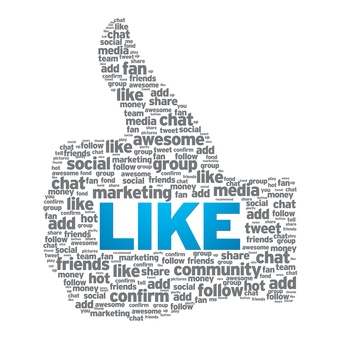“How much should I spend on Facebook ads?”
As a freelance digital marketer consultant and Facebook ads specialist, this is THE most frequently asked question I hear.
It’s a really bad question (I’ll explain why) and also impossible to answer with a specific monetary value.
When it comes to advertising on Facebook, or even social media in general, it seems like many business owners and entrepreneurs have heard too many stories about ‘going viral’ or some other miracle.
In reality, advertising on Facebook is just plain old business. Forget about digital marketing metrics like reach or virality or impressions—money spent on advertising is supposed to create revenue for you. If the ROI on your Facebook advertising campaign is good, you’ll spend as much money as you need to.
But to figure out the ROI of your Facebook ads, you’ll need a few things:
- A quantifiable goal (or goals)
- A digital marketing funnel
- A hypothesis to test
With those three things in hand, you don’t have to ask me how much money to spend on Facebook ads—you can know and spend according.
And I’ll show you how, right now.
How to set a business goal for Facebook ads
One of the great things about Facebook advertising is that you don’t need an ecommerce store, or even a way to accept payments online, to have success. You can generate business results offline, too.
To make it interesting, let’s use lead generation as your business goal—you want an email address or a phone number to follow up personally and close a deal.
Before you launch your first Facebook campaign, come up with a goal for lead generation by asking yourself these questions:
- How many leads do you currently generate in a month?
- How many leads does it take to close a customer?
- How many leads can you realistically handle?
If you currently generate ten leads per month and close one of those into a customer, but you can handle four more paying customers, your goal for Facebook ads is to generate 40 leads per month with Facebook ads.
10 organic leads + 40 leads from Facebook ads = 50 leads
50 leads x 10% conversion rate = 5 customers
Too easy. Now for the tricky part.
Setting up your digital marketing funnel with Facebook ads
Web visitors aren’t exactly begging to become leads, especially if your website isn’t optimized for conversions. Think about your own online behavior—do you fill out a form any time somebody asks? Probably not, or your inbox would never see the light of day.
So if you want somebody to become a lead, you have to nurture them through a marketing funnel.
Start by using Facebook ads to send paid traffic to an awareness-level blog post. By “awareness-level,” I mean a blog post (or other content, like video) that helps them clarify their problem or need.
Once that person has read your blog post, you can retarget them to a more conversion oriented asset, like a landing page or better yet, a Facebook Lead Ad.
Because you’ve already introduced your brand and provided value for free with the awareness-level content, these retargeted visitors are far more likely to convert than if you had sent them straight to your landing page.
Note: In order to use retargeting and conversion tracking, you’ll need to have your Facebook Pixel properly installed and configured.
With either landing pages or Facebook Lead Ads, you can set what information you get from your lead—email, phone number, etc. If you’re taking in a large volume of leads, you can add additional qualifications to help you prioritize.
Digital marketing funnels are not as complex as they seem, and you can start with a simple one like the example above to test the viability of Facebook ads for your business.
Now to create and test your hypothesis…
How to create and test your hypothesis
You should never invest a significant amount of money into ANY advertising channel without testing it first. Here’s how you would test the viability of Facebook advertising; we’ll continue to use the same example from above.
Let’s say the average lifetime value (LTV) of a customer for your business is $1,000.
You create Facebook ads, drive traffic to a landing page, and measure conversions.
Your budget is $500 and your cost-per-click (CPC) is .50¢—this means you drove 1,000 visits to your landing page.
200 people (of the 1,000 visits) filled out your form, so your conversion rate from landing page visitor to lead is 20%. (Which would be incredible!)
Of those 200 people, 5 of them become customers (10%, again, very good).
Using your LTV, you’ve just made $5,000 of a $500 investment in Facebook ads.
That’s a 900% ROI.
By using the process described in this blog post, the question “How much should I spend on Facebook ads” now seems like a really, really dumb question. The answer is obvious:
If you’re seeing a 900% ROI on an advertising channel, you spend every penny you can get your hands on.
Now here’s the fun part—by breaking your digital marketing funnel down into individual pieces and looking at the metrics associated with each piece, you can improve on them one at a time with A/B testing:
- CPC too high? Try different ad creative or different targeting.
- Coverversion rate too low? Spruce up your landing page with better images, more compelling copy, fewer form fields.
- Leads not converting into sales? Try adding another qualifying step in your marketing funnel to not waste time on bad leads.
Start seeing ROI on your Facebook advertising campaigns by asking the right questions.

